SelApp is an innovative application designed to revolutionize the mall shopping experience in Morocco. As a lifestyle app, SelApp offers daily access to the best deals and promotions across various shopping centers, aiming to make each visit to the mall more rewarding and enjoyable.
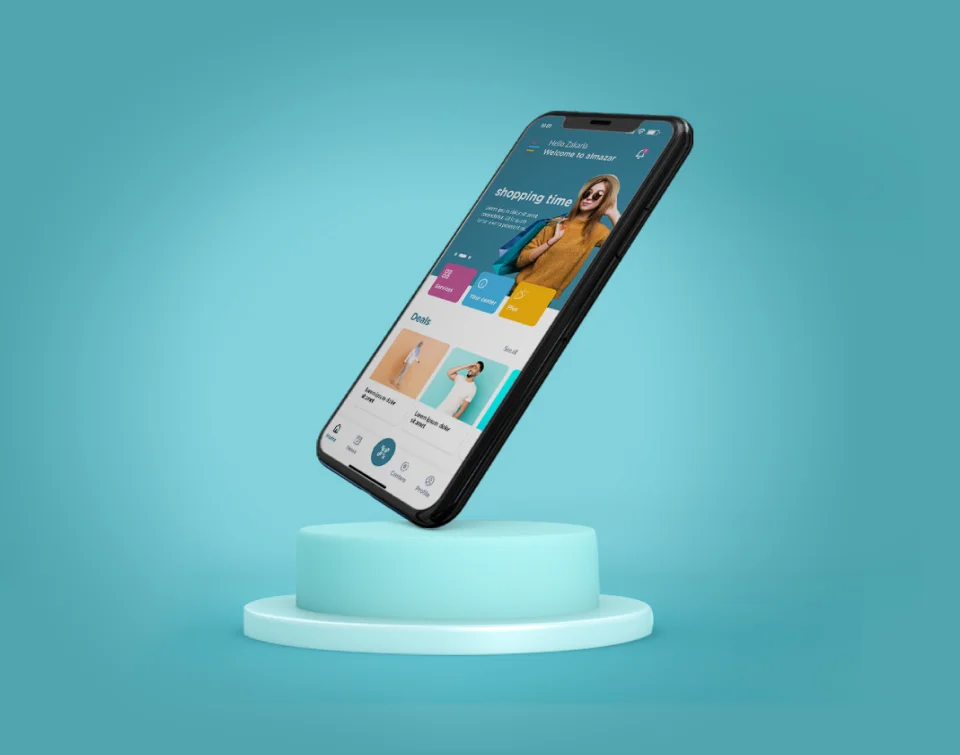
The challenge
The primary challenge for SelApp was to digitalize the traditional mall experience, aiming to boost foot traffic and sales for malls. The app was envisioned to make the mall experience more engaging and enjoyable, thereby encouraging more people to visit. The goal was to seamlessly integrate the convenience of digital technology with the physical shopping experience, enhancing the overall appeal of malls and driving increased sales.

Objectives and Goals
- Digital Transformation of Mall Experience: To integrate digital technology into the traditional mall shopping experience, making it more dynamic and accessible.
- Increase Mall Foot Traffic: Encourage more people to visit malls by offering an engaging and user-friendly digital platform.
- Boost Retail Sales: Drive increased sales in malls by leveraging the app to promote deals, discounts, and attractions.
- Enhance Shopper Engagement: Create a more enjoyable and rewarding mall experience for users, fostering loyalty and repeat visits.
- Promote Informed Shopping Decisions: Provide users with real-time information about offers, events, and promotions to enhance their shopping experience.
- Build a Community of Shoppers: Develop a community around mall experiences, allowing for shared experiences and feedback.
These goals were aimed at creating a seamless blend of digital convenience and physical shopping, enhancing the overall appeal and functionality of malls through SelApp.
Process and Solutions
1. User Interviews and Market Research:
The team began by conducting user interviews and market research to understand the needs and preferences of the target audience.
2. Defining Features and Focus Points:
Based on the insights gained, they defined the key features and focus areas for the software.
3. Ideation:
This stage involved brainstorming and conceptualizing innovative ideas for the software’s design and functionality.

4. Wireframes
The team then converted these ideas into wireframes, laying out the basic structure and design elements.
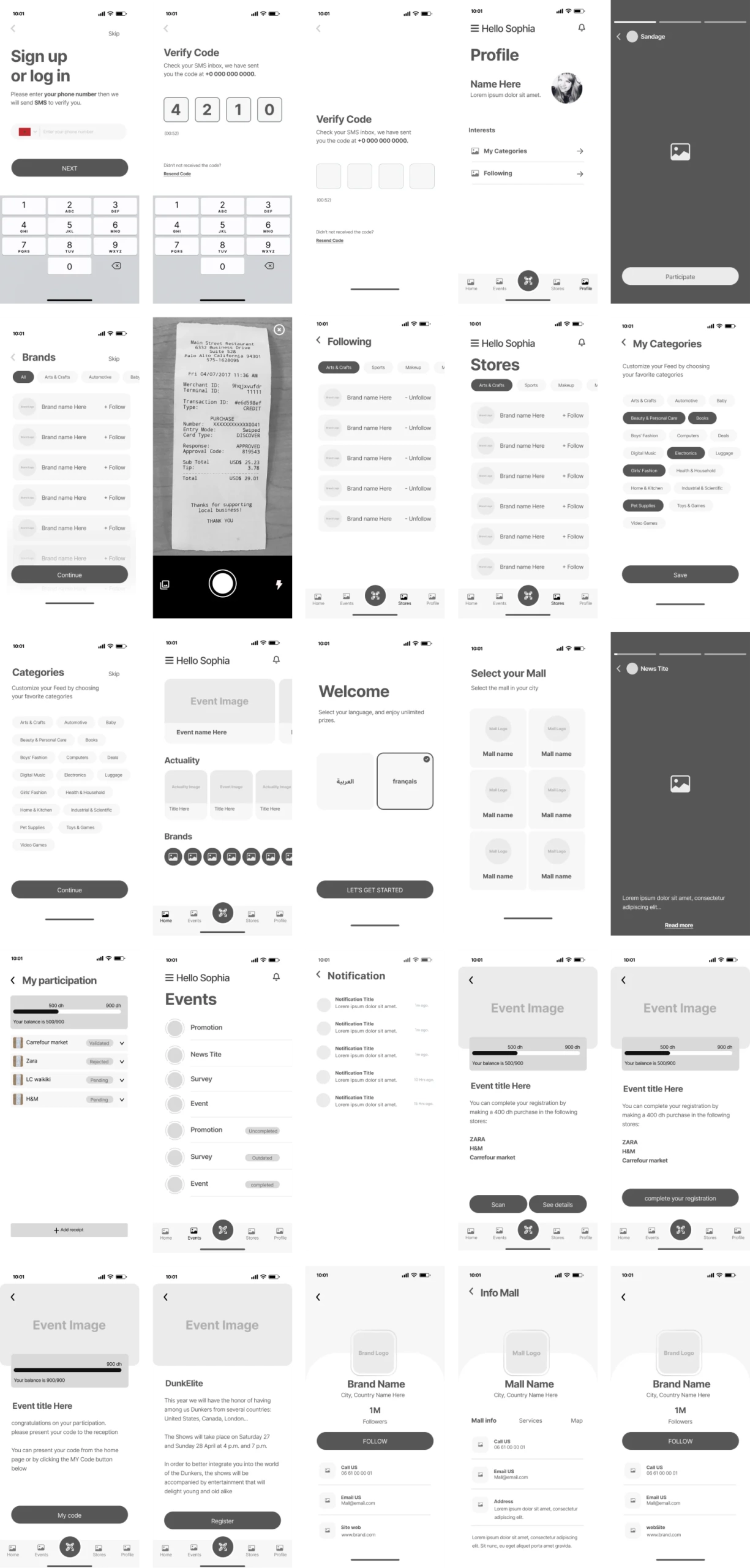
5. Creating the Brand:
A strong brand identity was developed to resonate with the target audience and differentiate Selapp in the market.
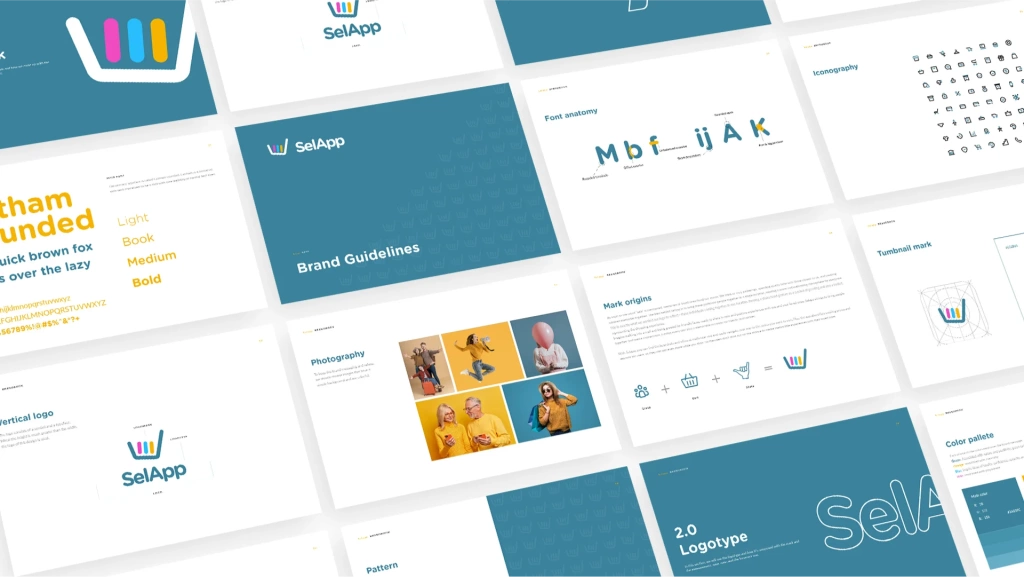
6. UI Design:
The user interface was designed with a focus on usability and aesthetic appeal.
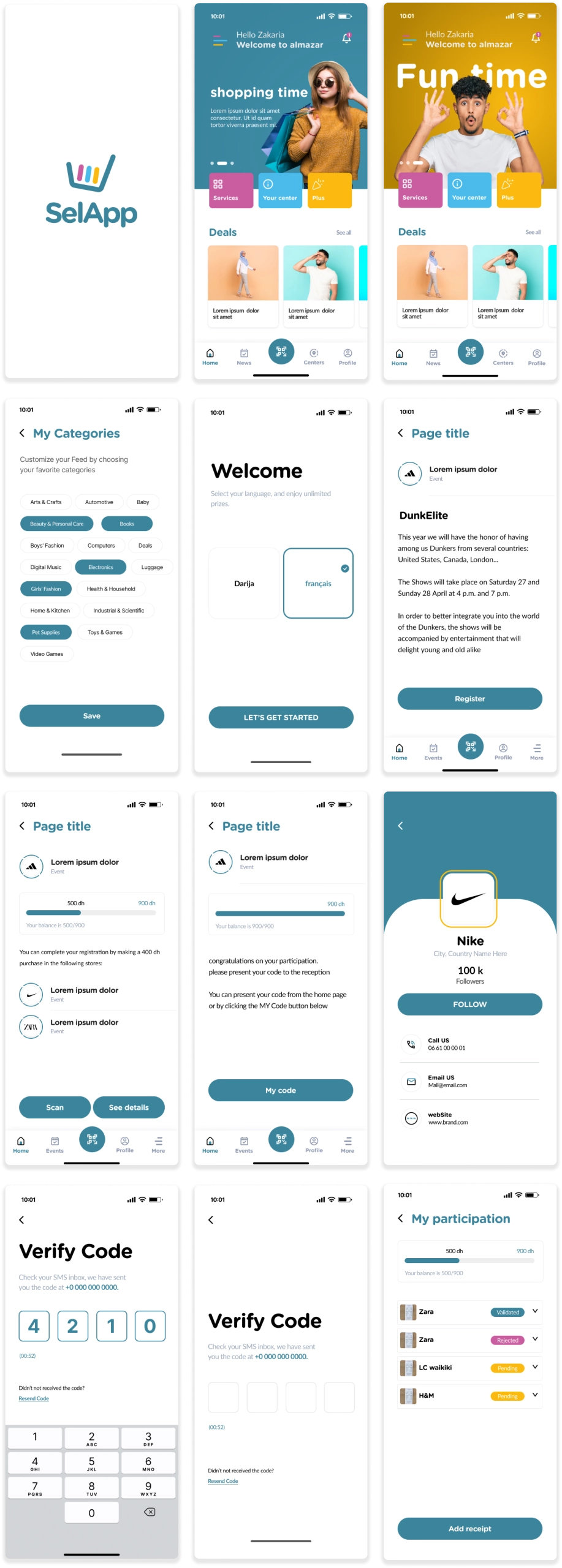
7. Testing and Iteration
The App underwent extensive testing to ensure functionality and user satisfaction.
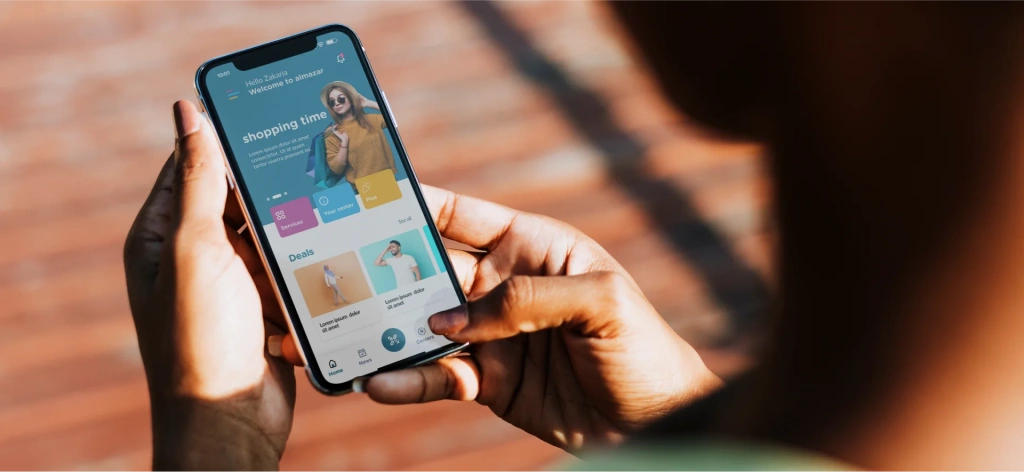
8. Documentation for Implementation:
Comprehensive documentation was created to facilitate smooth implementation and user adaptation.
Results and Impact
The results and impact of the Valia RH project were remarkable, as evidenced by the following key performance indicators:
- Development Time Reduction: The development time for HR processes was reduced by 50%, significantly enhancing operational efficiency.
- Return on Investment (ROI): There was a staggering 300% ROI on the investment, indicating the financial success and effectiveness of the project.
- User Adoption Rate: The adoption rate among target users increased significantly, demonstrating the software's ease of use and relevance to user needs.
- Customer Satisfaction: Customer satisfaction scores saw a notable improvement, reflecting the positive reception of the software's usability and functionality.
- Task Success Rate: Achieved an impressive 85% task success rate, indicating high effectiveness in completing HR-related tasks.
- System Usability Scale (SUS): Scored 80 out of 100 on the SUS, reflecting a high level of usability.
- Time on Task: Average time on task reduced by 30%, indicating increased efficiency.
- Customer Effort Score (CES): Achieved a low score of 2 out of 7, suggesting minimal effort required by users.
- Search vs. Navigation: 70% of tasks completed via navigation, indicating intuitive layout.
- Net Promoter Score (NPS): Recorded a high NPS of 60, demonstrating strong customer loyalty.
- User Error Rate: Reduced to a mere 5%, indicating a user-friendly interface.
- Customer Satisfaction Score (CSAT): High CSAT score of 90%, indicating excellent customer satisfaction.
- Misclick Rate: Reduced by 40%, enhancing the overall user experience.
- Standardized User Experience Percentile Rank Questionnaire: Ranked in the 90th percentile, indicating superior user experience.
- Conversion Rate: Increased by 45%, indicating effective user engagement.
- First Impression: 95% of users reported a positive first impression, setting a strong initial tone for user experience.
These outcomes not only reflect the success of the project in meeting its objectives but also underscore the value of a user-centric approach in app development.
